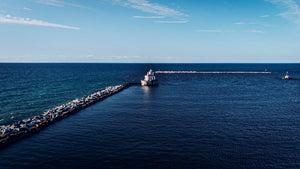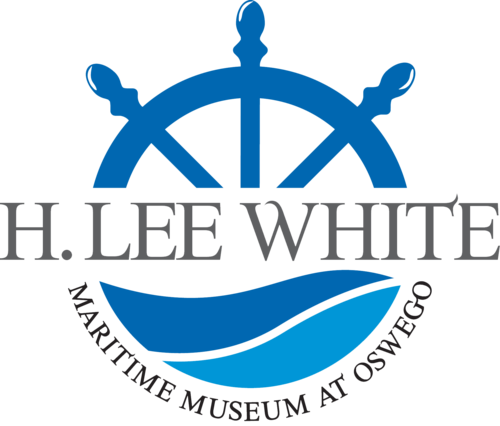The Captain's Cabin
Dive deeper into shipboard accommodations on the Great Lakes during the age of sail.
Information Courtesy of Loudon G. Wilson Collection at the Historical Collections of the Great Lakes, Jerome Library Bowling Green State University

Cabins of the Great Lakes
19th Century Great Lakes commercial sailing vessels, particularly those of American make, had varying accommodations depending on the type and use of each distinct vessel. Trade vessels on the lower lakes, Ontario and Erie, tended to consist mainly of the 'cannaller" type - or those that were built with the specifications to pass through the Welland and Erie Canals. Given their size constraints, they were less elaborate than the grain and ore carriers of the upper lakes - Michigan, Huron and Superior.
Many of the Ontario and Erie vessel cabins had a floor flush with the main deck so as to provide ample space for cargo below deck. Seen here is the location of the cabin on Knight Templar-an Oswego schooner built by George Goble. Notice the aft cabin above deck highlighted in blue. 
The grain and ore carriers of the upper lakes were too large for inter-lae trade and were often admired by the sailors of the lower lakes. The cabins of these vessels were often considered stately with paneling, fine wood and brass work, carpets and the finest of furnishings.
Seen to the left is the more spacious and elaborate accommodations for the upper lakes cargo schooner Grampian - Built in 1894 by James Davidson of West Bay City, M.I.
 The Captain's Cabin
The Captain's Cabin
The Captain's Cabin served as an important aspect of daily ship life - and continues to do so today. Captains of historic sailing vessels, whether of a commercial or naval warship, used this space to not only sleep, but to conduct business, chart a course, plan battle strategies, meet 1, with officers and more.
The Great Cabin positioned aft (highlighted in blue) on the colonial era British Royal Navy schooner Haliflax. Circa 1765.
Depending on the type and size of vessel, the cabin area (typically located at the aft of the ship) could be divided into dining, meeting, and sleeping areas, and generally provided a private head (or restroom facility) for the Captain's use only. Such as the more elaborate deck plans for the United States Trigate Constitution, 1797 seen here. 
On large naval vessels such as the Constitution, the Captain, Commodore, or ranking officer's quarters were normally constructed with removable walls so as to provide a cleared gun deck when in battle, and could be customized to distinguish between day and night cabins maximizing use of space and creating greater efficiency.

The Davis Boss Collection
According to family history, "...my family have been inhabitants of the seacoast for many generations, and we know that a love for the sea is just like many other hereditary characteristics : it runs in the blood...my uncle, David Boss, who settled in Oswego, U.S.A. was a ship-carpenter and sailed round the globe. I don't know how often, but he was on the sea most of his life.
The items in the David Boss Collection were taken on his around the world voyage in 1847 and include: Sea Chest, Books dated 1813-1817 Shoe Last (made at sea), Blue & White Quilt.
These items are on loan thanks to the Nesbitt Family, descendants of David Boss.
Navigation Equipment On Display
Sextant, compass, dividers, telescope, & chart of the Great Lakes.
The Captain's Desk
This desk is a fine example of early to mid-19th Century Chinese influence being brought back to the U.S. by clipper captains. This is apparent in the turning of the decorative capitols and in the incised gold work. This kind of symmetrical design was often used by cabinet makers during this period when designing furniture to be used in a restricted space - such as Lake Schooner. The desk belonged to William Johnson, a prominent nineteenth century businessman and merchant ship owner. Gift of Mrs. Eleanor Johnson
 Fun Fact!
Fun Fact!
An early form of measuring a ship's speed was by throwing a log attached to a rope overboard. The rate at which the rope played out as the ship moved away from the stationary log was measured by counting how long it took between knots in the rope. These measurements were later transcribed into a book. This is how we get the term 'log-book' and also the name 'knot' as the unit of speed at sea.

Support The Maritime Museum
There are many ways to support our organization through financial contributions, & donating just became a lot more simple.
Support The Maritime Museum
There are many ways to support our organization through financial contributions, & donating just became a lot more simple.
